Our dispatcher’s headset guide will educate and enlighten as we share our findings from servicing hundreds of centers over the past 20+ years. To simplify headsets, we will cover:
- Most common headsets currently being used in dispatch centers
- Pros and cons of wired and wireless amplifiers
- Juggling of users’ happiness, ease of inventory and maintaining accessories
- Dispatch center headsets Q&A
- Click here for the printable PDF version

Your shift begins…
Your day regularly entails a graveyard shift that has you coming or going in the dead of night. The only sign of life on the road is your headlights shining ahead. Once at work, you’re the lifeline connecting your department’s personnel with the public during times of crisis. You’re constantly multitasking under very stressful conditions, assessing problems and determining the best course of action, while keeping callers calm. Communicating is key and relying on hardware that works flawlessly is essential.
The right headset solution should work invisibly behind the scenes allowing you to perform your best when others’ lives are on the line.
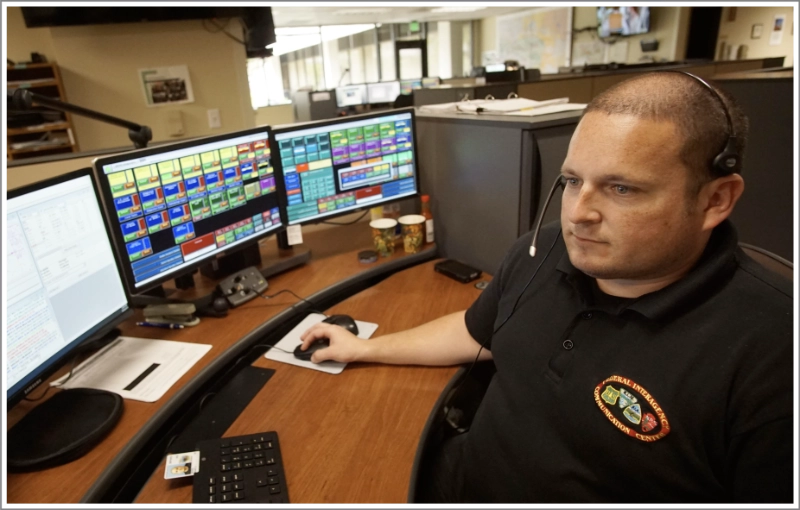
Headsets – Most Common Dispatch Options
Some take the scenic route while others just want to get from point A to point B. The same goes for headsets as everyone has their own opinion on headset wearing styles and what’s comfortable. Your environment and mandated policies will also affect headset choices. We have found the following are the most popular with key features listed:

In-the-Ear
- Lightweight & Low Profile
- Doesn’t mess your hair
- Seals background sound out for one ear
- Poly H31CD | Poly H81N-CD
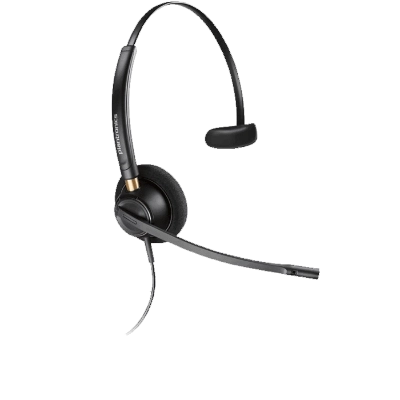
Headband – Mid Level
- Excellent audio
- Bendable microphone
- Foam ear cushion
- Poly HW510
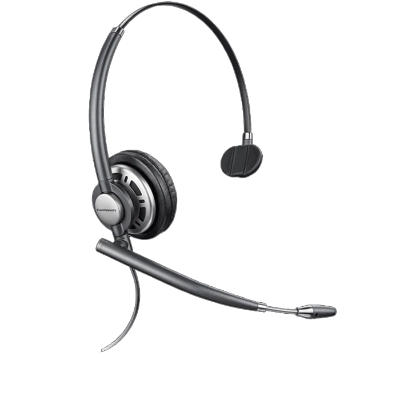
Headband – Upper Level
- Premium audio
- Telescoping microphone
- Leatherette ear cushion
- Poly HW710
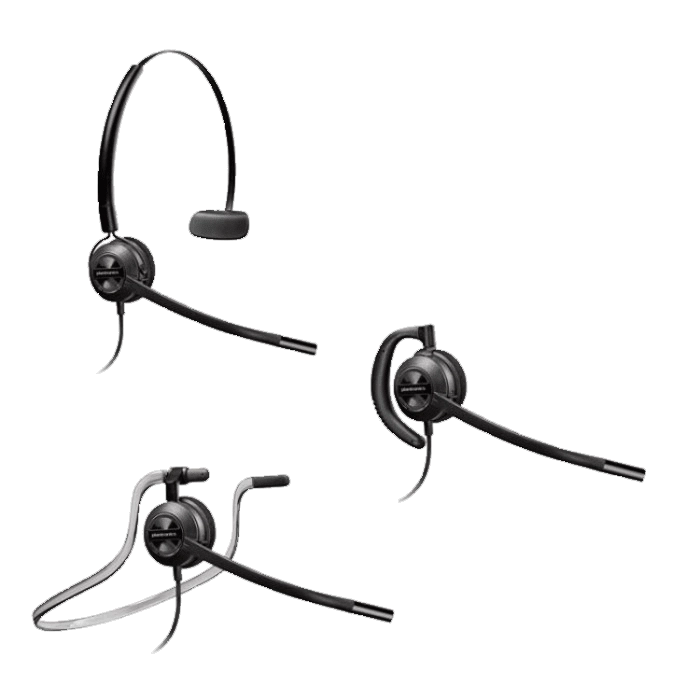
Convertible
- Multiple wearing options
- Lightweight
- Great for standardizing while still offering 3 wearing options
- Poly HW540
Amplifiers – Wired versus Wireless
When it comes to amplifiers, it’s all about wired versus wireless. This decision may also be heavily based on budget. The general consensus with our customers is if they can afford it, they always go wireless for the benefits listed below.
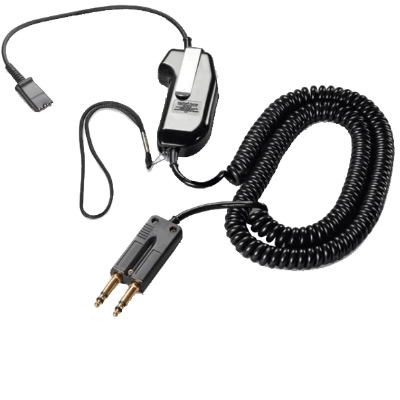
Wired
- Always ready (no batteries)
- Less expensive & less maintenance
- NOTE: Amplifiers come in 10, 15 and 25 foot coiled cord lengths. Make sure you are getting the reach you need, but not so much that you’re tripping over a pile of cords laying on the floor
- Poly SHS1890-10 | Poly SHS1890-15 | Poly SHS1890-25
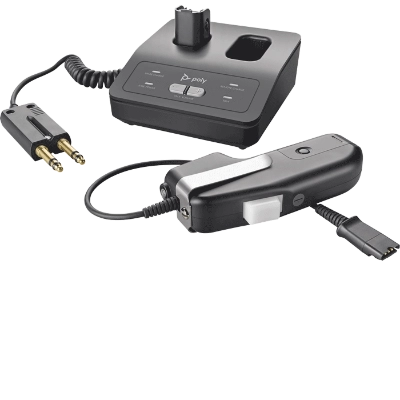
Wireless
- Be more productive being on calls as you walk about your center gathering info or conversing with others
- Many users find they have better conversations being able to pace about their area
- Comes with 2 batteries, allowing one to be in use while the other is charging
- NOTE: Best to replace all batteries every few years to avoid constant swapping and short charges as batteries age
- Poly CA22CD
Users – Happiness and Inventory
- Giving users options in wearing styles improves their perception of comfort and headset happiness.
- Assigning each person their own headset makes them more accountable to its care and significantly increases its longevity.
- Sharing poses hygiene issues and a ‘use it and abuse it’ mentality. We see much higher breakage of headsets in these environments.
- When using wireless amps, you will need to coach your users to always start a shift with a fully charged battery and place a second battery in the charging bay so it’s ready when needed. They will also need to alert you when a specific battery is not holding a normal charge so it can be replaced in the battery rotation.
- If already using headsets, surveying your staff regarding their current setup and how well they hear, communicate and current pain points will allow you to improve on what you already have in place.
- Standardizing on one model will simplify ordering and maintaining replacement accessories. The more choices you offer, the more accessories you need on standby.
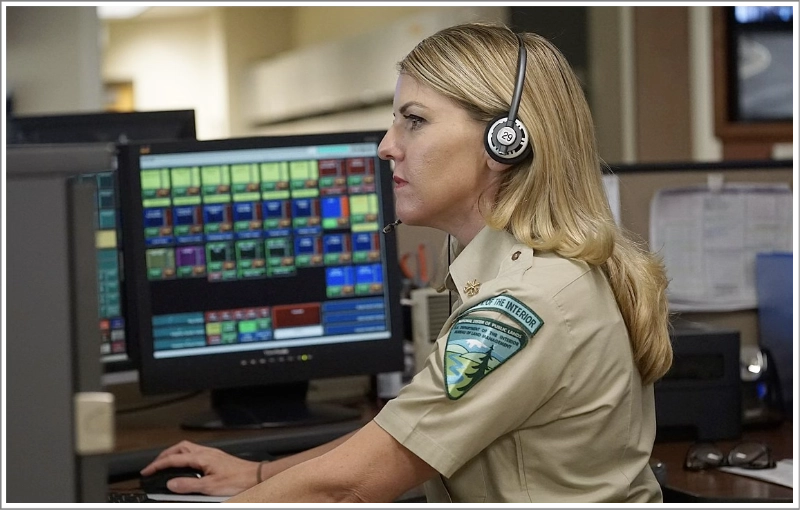
Q&A for Dispatch Headsets and Amplifiers
Yes, both wired and wireless solutions use a Quick Disconnect connection. That’s where you can easily add a standard Y-cord for a 2nd person to listen in.
Yes, the coiled cord comes in 10, 15 and 25 foot lengths.
The static is almost always related to the cables in the amplifier. Cleaning the 2-prongs with a soft cloth is the first step. Next (only if you’re comfortable) is opening the casing that holds the prongs and slightly loosen the 6 screws, reposition the wires slightly and re-tighten. If you have electrical contact spray or compressed air, spraying around the 6 screws and contact points before re-tightening is very beneficial.
If you notice static in the headset cable of a wireless unit, the short patch cable with the quick disconnect coming from the remote pistol grip is a replaceable cable you can order
The CA22CD includes a USB port. Easy plug-n-play with the additional USB cable (sold separately).
Both units use the same HW & H series headsets. The accessories are not interchangeable.
The console you plug into is either configured to support 4-wire (becoming obsolete) or 6-wire amplifiers. For Push-to-Talk (PTT) also called Push-to-Key (PTK) amplifiers, you need 6 wires built into the 2-prong jacks. 3 wires connect to each prong providing audio and the ability to key the microphone.
The Poly HW510 has circumaural ear cushions (sold separately) that work exceptionally well.
Yes, you will find a selector just below the white switch. If vertical, depress the PTT button and slide down towards the selector until it locks. If horizontal, it will be in momentary operation.
To Simplify Your Decisions
By the numbers, other dispatch centers are:
Offering two headsets:
- Poly H31CD ear model
- Poly HW710 headband
Opting for wireless versus wired at a 2-1 rate:
- Poly CA22CD-SC
Everyone having their own headsets will be a hygiene & longevity benefit. Having spare ear-tips & replacement cushions on hand will save you money from expediting orders.
We started this journey in the dark of the night and hopefully shed light on the topics below:
- Dispatch headsets and key benefits
- Wired vs. wireless amplifiers
- User preferences and satisfaction
- Q&A session
When mission critical headsets are paired with a dedicated team, the ultimate outcome is great audio, comfort and durability. Users focus on their job and current task without distraction. The headset solution should become a productivity tool performing it’s job in the background.
What Makes Headsets Direct Different?
Our customers are buying exceptional sound quality and comfort in solutions that precisely meet their needs. Being headset specialists, we know the ins and outs of our products that our competitors don’t have the time or desire to learn. When extra support is needed, our access to manufacturer reps is invaluable as it saves time, money and your sanity. Contact us today for a very different buying experience!
What Next?
Visit our 911/Dispatch Headsets, Amps & Batteries for more great info!
